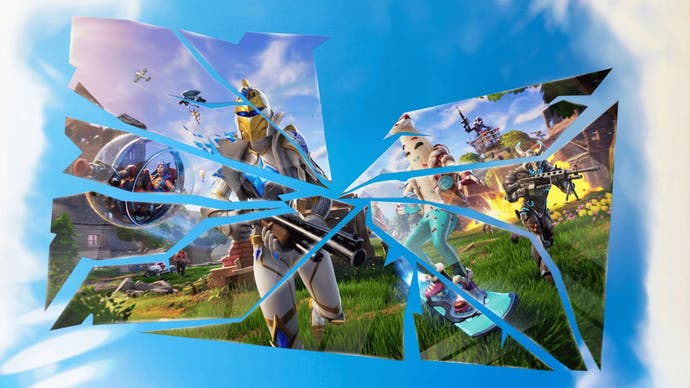Fortnite's huge popularity spike is both brilliant and devastating
Back to basics.
Fortnite has made a sudden return to its long-lost original map for a month-long mini-season fuelled by nostalgia, and its sudden spike in popularity has blown past everyone's expectations. It's a stunning moment for Epic Games' ever-changing battle royale - even by Fortnite's own stratospheric standards - and yet I can't help but feel a tinge of sadness that this is the version of Fortnite all 44 million players picked up on Saturday.
The game's first map is a special place, home to countless player memories and a string of wild and memorable live events, the likes of which haven't really been topped since. But it was also the game at its most basic and rough - a nimble but work-in-progress creation labelled as "Early Access" and built on-the-hoof as Epic Games quickly pivoted from Fortnite's initial PVE zombie shooter origins.
To see this version of Fortnite blow up now is surely brilliant for the future of a game I play pretty much every day - which Epic itself has said is only now starting to grow in popularity again after previous lockdown-era peaks (and since it became a lot more difficult to play on mobile). But the fact remains this is a version of the game that, nostalgia aside, lacks so many of the features and functionality Epic had built on top of these foundations. And it also presents something of a dilemma for Epic, as it must now navigate how it will cater to the tens of millions who turned up to play Fortnite OG after this month concludes.
Fortnite OG makes some small concessions to newer players by keeping the game's sprinting and mantling intact (these arrived several years after the original map had already been sucked into a black hole). There are also ziplines to cater for Zero Build players who cannot otherwise reach some areas of high ground. But there's no swimming, no cars, no vaults and keys, no gameplay augments, no friendly AI characters to hire or bosses to defeat. The map's wide-open empty spaces and its basic loot pool offer a history lesson in game design. And as nice as it is to see the original Island with ray-tracing, there’s no escaping that it looks like a game from 2017, rather than one built from scratch in Unreal Engine 5. (Will we ever see the Unreal Engine 5-powered map that existed last week again? It seems unlikely, and I’ll miss its lush rainforest biome and warm autumnal areas. Its replacement with zero fanfare was likely designed to avoid confusing new players or long-lost returnees, but its end was remarkably abrupt.)
Most importantly, am I enjoying Fortnite OG now? Well… it's certainly a trip. I can't remember another game that has flipped the clock back on itself in such a dramatic fashion (or one where this had been so highly-requested by players). It's a fascinating experiment, but one where its rough edges are just that - however endearing it is to walk through the original Island's spaces once again. I find myself counting down the days to modern day Fortnite coming back - and wondering what'll happen when it does.
With 44 million players turning up for the game's original map, will Epic really consign its creation to the black hole of history once again? Or could Fortnite's first Island be offered as a separate mode, alongside the game's fifth all-new Island, widely-expected at the start of December? Offering both seems a simple solution to keep everyone happy, but I wonder if Epic might fear a split in focus - that a majority might stay with its dated original Island rather than jump into the shiny new map it has toiled to create. Certainly, Epic has resisted any urge to provide multiple Island maps in the past (and has blocked fans from recreating them using the game's creative toolset).
It's been a slightly disjointed year for Fortnite overall, after the game rebooted its map last December in favour of its newer Unreal Engine 5 showcase, but with a lack of any live event or real narrative push forward since. This summer saw the departure of the game's fan-favourite creative director Donald Mustard, and there's a sense among players that we're yet to see what's really next. Perhaps the arrival of Fortnite OG now is meant to act as something of a creative reboot - a moment to acknowledge the past but strike out with an all-new Chapter 2, rather than a Chapter 5.
Six years in, I'm willing to give Fortnite the benefit of the doubt. Perhaps Epic Games planned for this exact dilemma, and this mini-season is just an extremely clever focus test for the OG map being kept as another gameplay option. (It's worth remembering the addition of Zero Build was not initially guaranteed to become permanent.) If nothing else, this is all extremely Fortnite: a chameleonic and ever-changing creation that seeks to maintain popularity by continually defying expectations. The worst thing for Fortnite, I've always felt, is for it to eventually become boring. Whatever happens next, we're a long way away from that.



_Z5mtk2C.jpg?width=291&height=164&fit=crop&quality=80&format=jpg&auto=webp)





